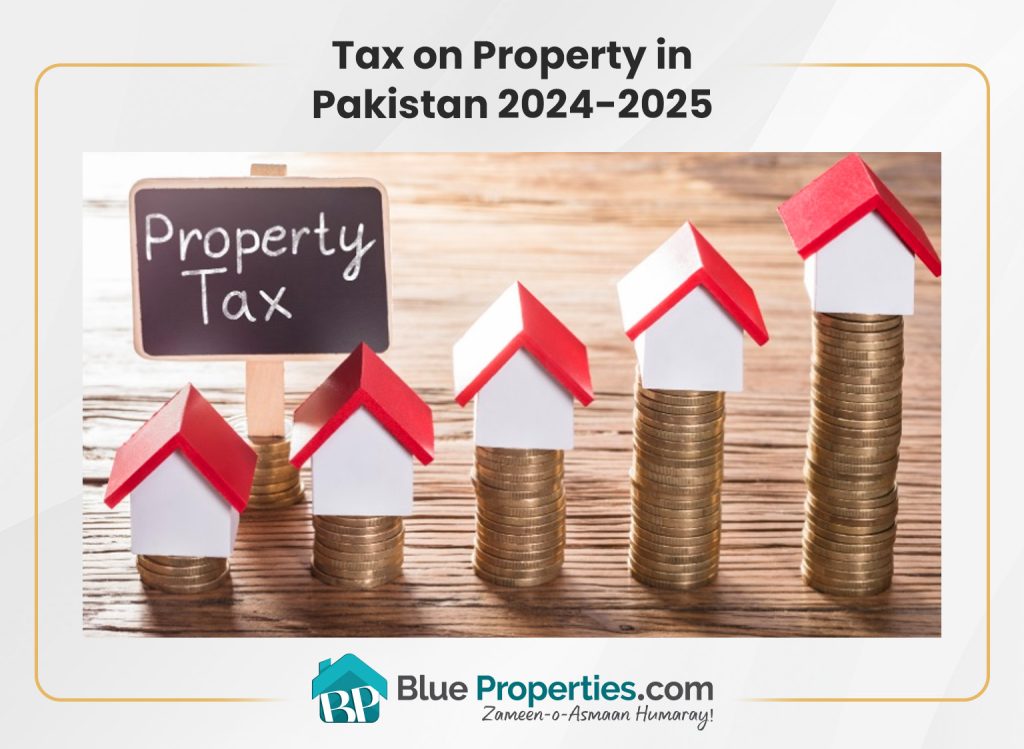
Tax on Property in Pakistan 2024-2025
The real estate and property tax systems have undergone substantial modifications as a result of the budget proposals for 2024–2025. The objectives of these modifications are to stabilize the real estate market, encourage transparency, and simplify the tax structure. Although these changes have been made, it is anticipated that they will have a minor effect on the real estate market because the measures are intended to guarantee a more just equitable tax system without blocking investment in the industry.
- Capital Gain Tax on Real Estate
Current Structure:
The capital gains tax on immovable property is currently imposed according to the span of the holding period. The tax rates for filers and non-filers range from 1 to 6 years, conditional on the duration of time the property is held. Moreover, a property is absolutely free from capital gains tax if it is held for more than six years.
New Proposal:
There will be a big change to the capital gains tax structure as of July 1, 2024. The tax rate will now be determined without taking the holding period into account. Rather, the filers will pay a flat 15% rate, while the non-filers will pay a much higher rate of up to 45%. As of July 1, 2024, properties acquired fall under the new structure. Prior to this date, properties will continue to be taxed according to the previous holding period structure.
The goal of this modification is to make the tax code more precise and make sure that all real estate transactions—regardless of how long they are owned—are taxable. The government hopes to discourage this practice in the real estate market and promote long-term investments by taking this action. Since the new rates are designed to encourage riskier gains rather than consistent investment returns, the impact on sincere investors should be minimal.
- Progressive Withholding Tax on Transfer of Immovable Property
Current Structure:
At present, the acquisition of immovable property is subject to a withholding tax of 6% for non-filers and 3% for filers. The purpose of this tax is to seize earnings that might otherwise remain unreported.
New Proposal:
The revised proposal confirms the problems with delayed tax filings and presents a more sophisticated approach to withholding tax. Taxpayers will be divided into three groups under the new structure: filers, non-filers, and delayed return filers. To encourage timely filing of tax returns, different tax rates will apply to each category, with the highest rates applied to non-filers.
The progressive tax system seeks to discourage people from filing their returns only when a transaction requires it and to encourage more people to file on time. In order to increase compliance and expand the tax base without placing undue pressure on legitimate real estate transactions, the government plans to introduce differentiated tax rates.
- Federal Excise Duty (FED) on Immovable Property
New Proposal:
On the sale of new plots, as well as residential and commercial properties, a Federal Excise Duty (FED) at the rate of 5% is proposed. This policy aims to reduce uncertain buying and selling, which can cause artificial inflation in real estate values. In order to keep the real estate market accessible and affordable for sincere buyers, FED’s introduction is seen as a step toward stabilizing the market.
It is anticipated that the restriction of FED will also bring in more money for the government, which it can use to fund public services and infrastructure improvements. It is designed, nevertheless, so that it shouldn’t prevent end users or serious investors from entering the market.
Impact on the Real Estate Market
The real estate market is not projected to be negatively impacted by the new proposals to the tax system, which include the progressive withholding tax, FED, and capital gains tax. These policies’ main objectives are to guarantee balanced taxation, improve transparency, and curtail speculative activity that could cause market instability.
The new tax rates are designed to be reasonable for real investors and end users, particularly for those who adhere to the filing requirements. A culture of timely tax compliance is being encouraged by differentiating between filers, non-filers, and delayed return filers. This could result in a more stable and predictable market environment.
Moreover, it is believed that the introduction of FED will help avoid price booms and guarantee that real estate will continue to be within the reach of the average buyer. The government intends to target speculative investments in order to keep a steady supply of real estate available at fair prices.
Summary:
In conclusion, the budget proposals for real estate and property taxes for 2024–2025 seek to create a tax system that is more appropriate and transparent. Even with the addition of new rates and categories, the overall impact on the market is expected to be either positive or neutral. Real estate investors and purchasers can enter the market with confidence because they understand that these measures are meant to promote long-term stability and growth.
For more information, contact us or visit our website.

